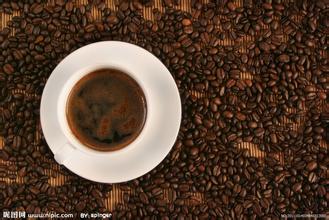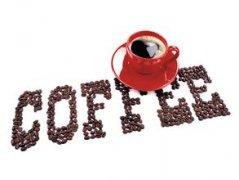A brief introduction to the treatment method of grinding degree and baking degree of fine coffee beans in Mercedes Manor

The origin of coffee
In the early 1990s, guerrilla warfare greatly damaged the country's national economy, reducing coffee production from 3.5 million bags in the early 1970s to 2.5 million bags in 1990-1991. The eastern part of the country was most affected by guerrilla warfare, and many farmers and workers were forced to leave the manor. The shortage of funds has led to a sharp drop in coffee production, from 1200 kg per hectare in the past to less than 900kg per hectare today.
In addition, the government imposed an additional 15% tariff on exported coffee in 1986, that is, an additional 15% in addition to the existing 30% tax. Taxes, together with unfavorable exchange rates, have greatly reduced the export of coffee and the quality of coffee.
The government finally realized the great role of coffee in the national economy, such as solving employment, earning foreign exchange and developing agricultural production, so it privatized some coffee export industries in 1990, hoping to increase the income rate of coffee in the export market.
Today, this coffee accounts for 40% of the country's exports. The best quality coffee is exported from January to March, and 35% of the extra hard beans are exported to Germany.
Salvadoran coffee
Flavor: balanced taste and good texture
Recommended baking method: moderate to deep, with a variety of uses
Top quality beans: El Salvador SHB
Taste characteristics: sour, bitter, sweet mild and moderate.
Salvadoran coffee ranks side by side with Mexico and Guatemala as the producers of Asa and Merdo, and is fighting for the top one or two places in China and the United States with other countries. The highlands of origin are large coffee beans of all sizes, which are fragrant and mild in taste. Like Guatemala and Costa Rica, coffee in El Salvador is graded according to altitude. The higher the altitude, the better the coffee. It is divided into three grades according to elevation: SHB (strictly high grown) = highlands, HEC (high grown central) = mid-highlands, and CS (central standard) = lowlands. The best brand is Pipil, which is what the Aztec-Mayan (Aztec-Mayan) called coffee, which has been recognized by the American Organic Certification Society (Organic Certified lnstitut eof America).
In El Salvador, the coffee beans rich in the Kuskabapa region are the best, slightly lighter, fragrant, pure and slightly sour. Like Guatemala and Costa Rica, coffee in El Salvador is graded according to altitude, and the higher the altitude, the better the coffee. The best brand is Pip, whose quality has been recognized by the American Organic Certification Society. Another rare coffee is Parkmara, a hybrid of Pacas coffee and Marago Rippi coffee, best produced in western El Salvador, adjacent to Santa Ana, which is close to the border with Guatemala. Parkmara coffee is full-grained, but the aroma is not very strong. El Salvador is one of the small countries in Central America with a very dense population. People here love coffee. The coffee in El Salvador tastes well balanced. Salvadoran coffee exports account for 40% of the country's exports. The best quality coffee is exported from January to March each year, and 35% of the extra hard beans are exported to Germany. In the early 1990s, due to the impact of war, the national economy of El Salvador was greatly damaged, even destroyed. Coffee production dropped from 3.5 million bags in the early 1970s to 2.5 million bags in El Salvador from 1990 to 1991. It is located in northwest Central America and is bordered by the Pacific Ocean to the south. It is one of the birthplaces of ancient Mayan civilization.
The nearby volcanoes, plateaus, lakes and bathing beaches along the Pacific coast are all very pleasant. But El Salvador is best known for its unique, mild-tasting coffee city that was once one of the main centers of the slave trade in colonial Africa. In 1558, the first African slaves arrived here and engaged in sugar cane cultivation. Until the middle of the eighteenth century, the port of El Salvador became the main trading center of Portugal; it was located on the triangular trade route between Africa, Brazil and Europe. Many European immigrants settled in this city.
In the 17th century, when Portugal was still under Spanish rule, El Salvador was often attacked by the Dutch. In order to defend the city, many fortresses were built. In 1625, the city was again ruled by the Portuguese.
The ancient city, built on a peninsula extending into the Atlantic Ocean, occupies the end of a mountainous island and is divided into cities by a steep slope.
Scenery of El Salvador
Scenery of El Salvador
And the cities below (upper and lower cities) can be reached by elevator or climb on foot. The city wall preserved along the steep slope is arched. The upper city overlooks the activities of the people in the city below. The uptown has baroque buildings and many small squares, public buildings, dwellings and gardens. They are simple and elegant and keep better than the lower city. The streets here are numerous and narrow, with a variety of patterns on the road, paved with black and white stones; downtown, there is the Modrow market near the port, where houses and people's activities are carried out around the port and commerce, where the slave trade was once very popular, and now it is an extremely bustling handicraft market.
The city of El Salvador has a large number of 16th-century buildings and religious buildings, many of which are decorated with 17th-and 18th-century carvings and stripes made of colored mud, reflecting the characteristics of the colonial period. Its overall characteristics are described through a forest of monuments and consistent ideas. All this shows that El Salvador is a famous example of a city that is structurally suitable for colonies.
There are also buildings and dwellings of different styles built in the next two centuries. The city of El Salvador was an important confluence of European, African and North American civilizations in the 16th and 18th centuries, and it was also an example of successfully transplanting Renaissance urban architecture to colonial cities.
There are more than 160 churches here (another source: "there are 76 churches in the urban area"), making it the city with the largest number of churches in Latin America. There are bright lines
Scenery of El Salvador
Scenery of El Salvador
A beautiful Gothic church; a luxurious and luxurious Baroque church with undulating lines and a sense of movement; the largest church is the church of Vasilla; the oldest is the church of the Madonna of Martris; built in 1549 The most magnificent St. Francis de Assis church, decorated with 300kg of gold and 80kg of silver, is now a religious gallery, showing visitors many historical relics, most of which are Catholic works of art.
There are more than 3000 ancient buildings in the Peronio, San Antonio and Sodre districts of the ancient city of El Salvador, of which Pelourinho is the largest complex built in Latin America during the European colonial rule, and many buildings have the ancient architectural style of Portugal.
Salvadoran coffee ranks side by side with Mexico and Guatemala as the producers of Asa and Merdo, and is fighting for the top one or two places in China and the United States with other countries. The highlands of origin are large coffee beans of all sizes, which are fragrant and mild in taste. Like Guatemala and Costa Rica, coffee in El Salvador is graded according to altitude. The higher the altitude, the better the coffee. It is divided into three grades according to elevation: SHB (strictlyhighgrown) = highlands, HEC (highgrowncentral) = mid-highlands, and CS (centralstandard) = lowlands. The best brand is Pipil, which is what the Aztec-Mayan (Aztec-Mayan) called coffee, which has been recognized by the American Organic Certification Society (OrganicCertifiedlnstituteofAmerica).
Salvadoran coffee
El Salvador (ElSalvador) is one of the small countries in Central America, where coffee is light, fragrant, pure, slightly sour and characterized by excellent balance of flavor. It is a specialty of Central America. With sour, bitter, sweet and other taste characteristics, the best baking degree is moderate, deep.
Important Notice :
前街咖啡 FrontStreet Coffee has moved to new addredd:
FrontStreet Coffee Address: 315,Donghua East Road,GuangZhou
Tel:020 38364473
- Prev

A brief introduction to the cultivation of boutique coffee beans in Mercedes Manor with balanced taste, geographical location, climate and altitude
The government finally realized the great role of coffee in the national economy, such as solving employment, earning foreign exchange and developing agricultural production, so it privatized some coffee export industries in 1990, hoping to increase the income rate of coffee in the export market. Today, this coffee accounts for 40% of the country's exports. The best quality coffee is exported from January to March, with 35% of the extra hard beans coming out.
- Next

A brief introduction to the Flavor, Taste and aroma characteristics of Fine Coffee beans in the Jadeite Manor with light cocoa flavor
Panamanian coffee is classified and numbered into small batches, which are designed to have a small capacity for optimal management, and classification numbers allow buyers to understand and track the entire process. Because of its small quantity, Panamanian coffee products are based on special coffee. The country provides its high-quality products to specialized stores around the world, such as Denmark, Britain, Greece, Norway, Sweden and South Africa.
Related
- Does Rose Summer choose Blue, Green or Red? Detailed explanation of Rose Summer Coffee plots and Classification in Panamanian Jade Manor
- What is the difference between the origin, producing area, processing plant, cooperative and manor of coffee beans?
- How fine does the espresso powder fit? how to grind the espresso?
- Sca coffee roasting degree color card coffee roasting degree 8 roasting color values what do you mean?
- The practice of lattes: how to make lattes at home
- Introduction to Indonesian Fine Coffee beans-- Java Coffee producing area of Indonesian Arabica Coffee
- How much will the flavor of light and medium roasted rose summer be expressed? What baking level is rose summer suitable for?
- Introduction to the characteristics of washing, sun-drying or wet-planing coffee commonly used in Mantenin, Indonesia
- Price characteristics of Arabica Coffee Bean Starbucks introduction to Manning Coffee Bean Taste producing area Variety Manor
- What is the authentic Yega flavor? What are the flavor characteristics of the really excellent Yejasuffi coffee beans?

